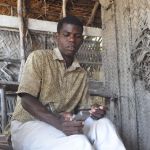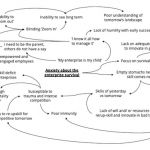Overcoming an Outdated Narrative: Why Investors Need to Recognize Africa’s True Potential
When Nigerian author and MacArthur Genius grantee Chimamanda Ngozi Adichie arrived in the United States for college in the 1990s, her roommate was surprised that she knew how to use a stove. People asked her where she had learned English, and her writing professor informed her that the African characters in her novel weren’t believable because they drove cars. For the first time, Adichie found herself confronted with what she now calls the single story of Africa, “a story of a place of beautiful landscapes, beautiful animals and incomprehensible people, fighting senseless wars, dying of poverty and AIDS.”
It’s a pervasive narrative, upheld through modern media and internalized by Western audiences. It’s also an incomplete story—a one-dimensional frame that’s had an extraordinary influence on how much of the world views Africa. This worldview permeates even the financial sector, causing investors to overemphasize risks—both real and imagined—across the continent. As a result, they overlook investment opportunities that could benefit their shareholders and retirees, as well as enhance America’s contribution to the prosperity, stability and self-reliance of African nations.
The Importance of Infrastructure
Africa’s infrastructure—its transportation, water, power, health and education systems—fundamentally affects every human development outcome on the continent. Unfortunately, the gap between current infrastructure spending in Africa and the amount required to ensure electricity, water and sanitation access alone stands at about $3.3 trillion. All the world’s aid agencies and donor resources combined would not achieve that sum: It requires channeling the largest pools of capital on the planet. That means tapping into $70 trillion in institutional capital worldwide, especially the pension funds and insurance companies that allocate over $45 trillion in assets. Mobilizing a mere one percent of institutional capital would equal more than four times the total official development assistance provided annually by all donor countries combined.
This underinvestment in Africa’s infrastructure will become only more critical as the coronavirus pandemic begins to penetrate lower-income countries and places additional stress on already under-developed health systems. While the pandemic’s long-lasting effects on the world economy and investment trends are still unknown, the mobilization of private investment alongside development assistance will continue to play an important role in the realization of positive social, environmental and humanitarian results as the developing world copes with the ongoing crisis.
Within the U.S., pension funds alone manage approximately $9 trillion, but they invest little of that capital in sub-Saharan Africa. However, African infrastructure assets should be an attractive asset class for pension investors. Because of persistently low interest rates in developed economies, institutional investors cannot generate the cash flow necessary to meet their obligations by investing in Western markets alone. It’s no secret that U.S. public pensions, in particular, are underfunded and facing huge liabilities. The search for higher yields means institutional investors must consider opportunities in faster-growing markets. In 2018, Africa was home to six of the world’s 10 fastest-growing economies.
African infrastructure assets also have long-dated, inflation-resilient returns that match the long-term liabilities that institutional investors must pay out – and they have the potential to deliver outsized investment returns, according to a 2018 Mercer Study. Despite these factors, much of U.S. institutional capital remains overwhelmingly invested in developed markets, meaning that a sudden drop in those markets would dramatically cut the savings of future retirees. Africa’s markets are the least correlated with developed markets, which provides an excellent opportunity for institutional investors to diversify their portfolios.
Onboarding Investors
Nevertheless, many institutional investors are still reluctant to invest in Africa. Their lack of experience with the region makes them feel vulnerable to poor investment decisions. Rather than see Africa as a land of opportunity, many see the continent as a land of risks. Their concerns reflect real risks—political, macroeconomic, reputational—but also may overweigh perceived risks that are increasingly at odds with the realities of modern Africa. In doing so, institutional and other investors may be missing out.
Investing in any emerging market is accompanied by uncertainty. Political risks, such as the possibility of conflict, tax increases or regulatory changes, can increase the possibility of delays, damage to physical assets and nonpayment. Weaker management capacity can threaten profitability, and weak corporate governance structures can give companies’ management a stronger voice than their shareholders. However, Africa is at no greater risk of these investment challenges than other emerging market regions – and infrastructure projects in the region actually benefit from unique risk controls when compared to projects elsewhere. Many African projects are U.S. dollarized, minimizing currency risks linked to foreign exchange rates. And development agencies and development finance institutions (DFIs) provide concrete risk-mitigation—such as partial-credit guarantees, subordinated debt and contingent financing — for many infrastructure investments throughout the region.
While African infrastructure projects often have less immediate liquidity and longer completion lead times than infrastructure projects in other regions, these attributes have not led to greater default risks. In fact, African default rates are lower than the average rates across all global regions, including North America. Additionally, the continent’s infrastructure project debt has a significantly lower default rate compared to other emerging market regions, such as Latin America, the Caribbean and Asia, which many institutional investors perceive as safer options for portfolio diversification.
Regardless, shifting the mindset of “Africa skeptics” with raw data alone remains a tremendous challenge. That’s why the United States Agency for International Development (USAID) partnered with the National Association of Securities Professionals to launch the Mobilizing Institutional Investors to Develop Africa’s Infrastructure (MiDA) initiative. Driven by the larger market forces affecting investor behavior, MiDA was explicitly designed to take advantage of these tailwinds. The U.S. investment community had already begun to turn its attention to Africa in its search for higher yields and greater diversification. However, since the aversion to investing in Africa is often based on perception rather than evidence, the initiative deliberately took a step back and focused on dismantling these accumulated, preconceived notions about the continent. MiDA’s hands-on, intensive approach has started by taking investors directly to the investment sites, inviting them to explore the neighborhoods they were investing in and get to know the people responsible for deploying their capital and looking after their investments.
Over the last three years, MiDA has facilitated investor delegation trips to sub-Saharan Africa, offering American institutional investors the chance to learn about opportunities directly from their African peers. These delegations traveled to Senegal, South Africa and Kenya, where participants visited on-the-ground investment opportunities across multiple sectors and met with members of the African investment community. This first-hand experience on the continent changed their perceptions in ways that facts and stats had failed to do.
The 2019 delegation consisted of 32 investors, a combination of asset owners and managers, who held over $1 trillion under their management. In Africa, they saw sophisticated and well-structured infrastructure projects, including a power plant in Kenya and an affordable housing project, funded by local pensions, in Johannesburg.
Richard Ingram, the executive director of the Teacher’s Retirement System of the State of Illinois (TRS), participated in the 2019 delegation. “For me, this trip was an example of why there’s no substitute for actually ‘being there,’” he says. “Whenever you read investment outlooks for the coming year, there’s very little mention of Africa. It just struck me as odd that such a big chunk of the world wasn’t even on the radar screen. … The ability to get beyond the headlines, to see the reality in Africa, was a real motivation for me going [on the delegation].”
The MiDA delegation gave American pension decision-makers like Ingram the opportunity to form direct, personal connections with their African counterparts in local pension communities across the continent. Moving beyond stereotypes, they had the chance to explore co-investment strategies with their African peers, speaking a common language of finance and evaluating risk.
For American investors, having a strong local partner or financial intermediary familiar with the local context – including project intricacies and institutional weaknesses – decreases operational risks significantly. Their foresight can also help foreign investors plan ahead to avoid potential pitfalls. For instance, long project timelines in sub-Saharan Africa need to be properly accounted for and managed; otherwise, payment delays can create liquidity risks for investors and drag down return expectations. Building up investors’ knowledge of a new market through co-investments and joint due diligence processes can greatly increase the comfort-level of institutional investors looking to become active in the region.
At the same time, American investors can share their expertise with a growing African institutional investor community. American institutional capital is an important gateway for African asset owners into the scale and sophistication of the U.S. financial sector. The African institutional investor community is small but growing, and U.S. capital and expertise can help this nascent community reach its potential, giving them the tools they need to finance their own future with the savings of their own people.
Since the delegation visit, Ingram has traveled back to Africa to do follow-up work. He’s been developing a list of potential investment partners for TRS, and he’s inviting the U.S. International Development Finance Corporation, or DFC for short, to present to his staff about the risk mitigation and due diligence value that the DFC can bring to institutional investors considering African investments. He’s now committed to expanding awareness about investment opportunities on the continent.
Built to Prosper
With a little over $2 million in grant funding, MiDA has mobilized $1 billion in two-way investment commitments so far. USAID is now poised to roll out the next phase of institutional capital mobilization work under Prosper Africa, U.S. government initiative designed to bolster two-way trade and investment between the U.S. and Africa. Prosper Africa’s institutional investor program, supported by USAID’s regional missions in Kenya and South Africa, will combine investor relationship-building with a heavier dose of transaction facilitation, all managed by USAID’s INVEST initiative, which mobilizes private capital for development.
As African economies grow, countries have a choice between relying on opaque systems of state-directed development, or helping to build transparent markets that empower both citizens and their businesses. These countries can remain dependent on handouts from wealthier nations or develop the means to resource their own futures independently. USAID believes that private investment in Africa will help countries choose the latter course and take a step forward on their journeys to self-reliance.
As Chimamanda Ngozi Adichi says, Africa is a place of many stories. Stories of beautiful landscapes, beautiful animals, and entrepreneurial people overcoming economic and social challenges, working toward sustainable development and inclusive growth. Stories that involve Americans and Africans working together to pursue a common prosperity.
Cameron Khosrowshahi is an investment officer and Emily Langhorne is a communications specialist for USAID INVEST.
Photo: Cape Town, South Africa. Photo courtesy of 4657743.
- Categories
- Investing



